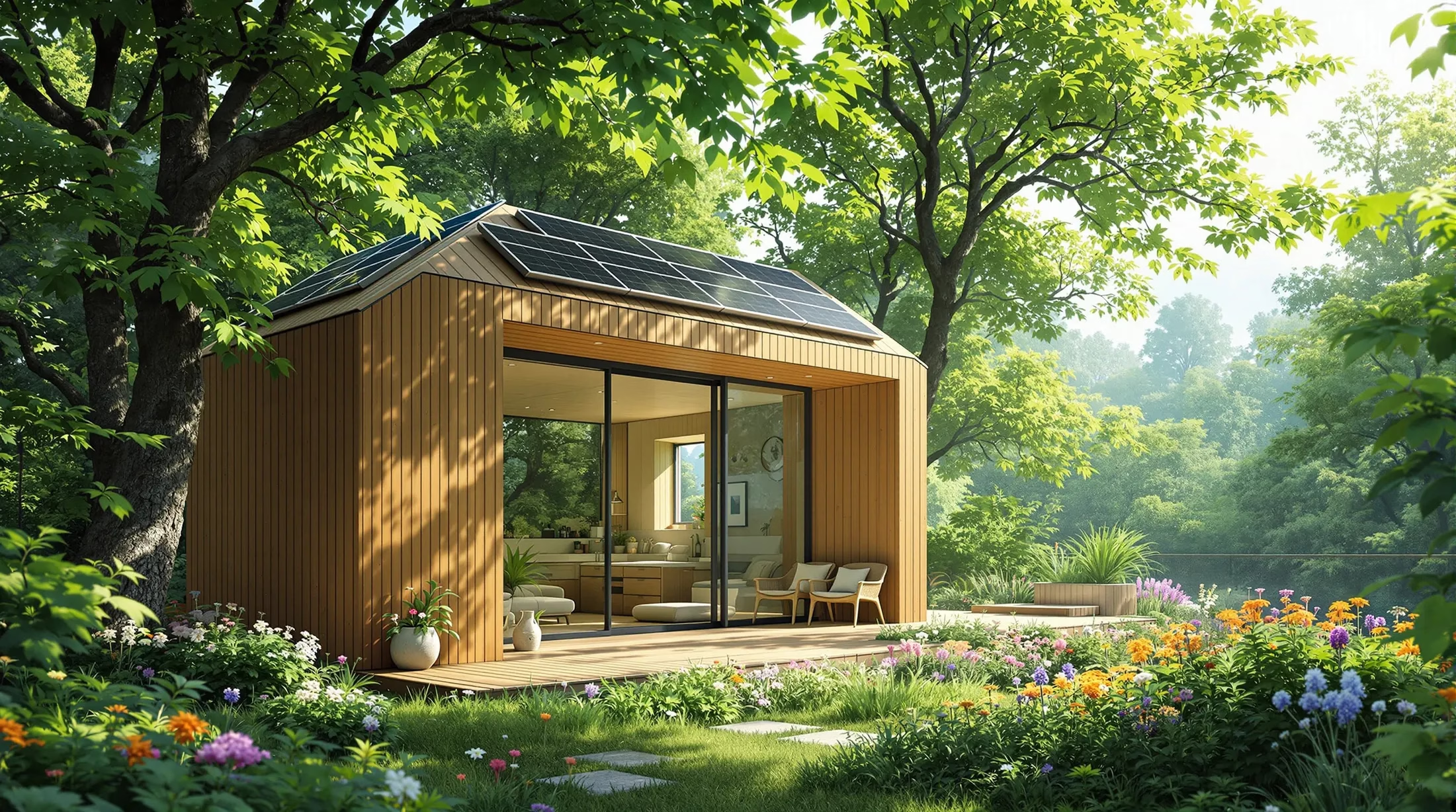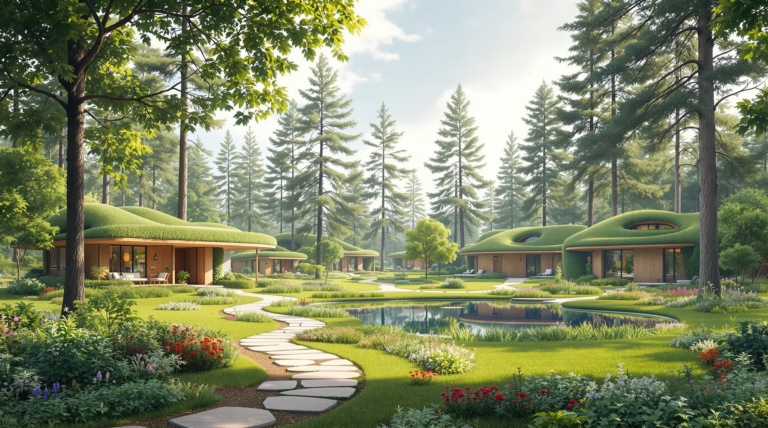Eco Tiny House: Embrace Sustainable Living in a Compact Space
Looking to revolutionize your living space while making a positive impact on the environment? Eco tiny houses represent a groundbreaking solution that combines sustainable living with smart design. Let’s explore how these innovative dwellings are reshaping modern housing and offering a path to a more sustainable future.
Understanding the Eco Tiny House Concept
The eco tiny house movement champions a revolutionary approach to modern living by merging sustainability principles with compact, efficient housing design. This innovative concept focuses on downsizing physical living spaces while maximizing functionality and environmental consciousness. Through minimalist architecture and thoughtful design, these homes address contemporary challenges including affordability, environmental impact, and resource consumption.
What sets eco tiny houses apart is their intentional focus on environmental sustainability. These dwellings incorporate:
- Renewable building materials
- Energy-efficient systems
- Waste-reducing design elements
- Low-carbon footprint solutions
- Resource-conscious features
What is an Eco Tiny House?
An eco tiny house is a compact dwelling under 400 square feet that combines space efficiency with sustainable building practices. These structures feature:
- Sustainable or reclaimed building materials
- Energy-efficient systems and superior insulation
- Strategic window placement for passive solar heating
- Renewable energy systems
- Rainwater collection systems
- Multipurpose spaces and built-in storage solutions
The Rise of the Tiny House Movement
The tiny house movement gained significant momentum after the 2008 financial crisis, evolving from a fringe architectural trend into a comprehensive social movement. This transformation has been driven by several key factors:
| Factor | Impact |
|---|---|
| Rising Housing Costs | Making traditional homeownership increasingly unattainable |
| Environmental Concerns | Driving the search for reduced carbon footprint solutions |
| Digital Nomad Lifestyle | Enabling location-independent living options |
| Media Coverage | Increasing awareness and showcasing practical solutions |
Design and Features of Eco Tiny Houses
Eco tiny houses exemplify the perfect balance between functional design and environmental consciousness. These homes feature high vaulted ceilings, clean transitional designs, and full-sized amenities within their compact footprint. The architectural approach prioritizes both spatial efficiency and sustainability through:
- Open floor plans with strategic furniture placement
- Large windows for natural light and outdoor connection
- Built-in furniture and storage solutions
- Resource-efficient design elements
- Waste-reducing features
Innovative Design Elements
Innovation is at the heart of tiny house design, with multi-purpose solutions leading the way. Key features include:
- Convertible furniture (sofa-beds, fold-away tables)
- Storage-integrated staircases
- Loft bedrooms maximizing vertical space
- Pull-out extensions for temporary space expansion
- Pocket doors replacing traditional swinging doors
- Outdoor living spaces (fold-down porches, rooftop decks)
Sustainable Building Materials
Material selection represents a crucial aspect of eco tiny house construction, with builders increasingly choosing options that minimize environmental impact while maximizing durability and efficiency. Reclaimed materials feature prominently in these designs, creating homes with distinctive character and historical connections while reducing environmental impact.
- Salvaged floorboards – add character while reducing demand for new timber
- Repurposed windows and doors – bring unique charm and historical elements
- Recycled external cladding – creates distinctive aesthetics
- Structural insulated panels (SIPs) – provide superior insulation with less material
- Non-toxic paints and finishes – ensure healthy indoor air quality
- Bamboo flooring – offers rapidly renewable alternative
- Cork insulation – provides sustainable insulation solution
- Metal roofing – ensures longevity and recyclability
Energy Efficiency and Off-Grid Living
Energy efficiency defines eco tiny houses, with their compact size naturally requiring less energy for heating, cooling, and lighting. Advanced insulation techniques create superior thermal envelopes, while strategically placed windows maximize passive solar gain and natural ventilation.
| Off-Grid Feature | Benefit |
|---|---|
| Solar Panel Systems | Provide clean electricity sized for minimal requirements |
| Battery Storage | Ensures continuous power regardless of weather |
| Composting Toilets | Eliminate need for traditional plumbing |
| Rainwater Harvesting | Supplies water for household needs |
| Efficient Wood Stoves | Provide adequate warmth with minimal footprint |
Benefits of Living in an Eco Tiny House
Eco tiny houses represent a transformative approach to sustainable living, offering benefits that extend far beyond reduced square footage. These compact dwellings, typically ranging from 100 to 400 square feet, enable dramatic reductions in energy consumption while fostering a lifestyle focused on experiences rather than possessions.
Financial Freedom and Affordability
- Purchase costs: $10,000 to $40,000 (versus traditional home down payments)
- Reduced utility expenses – often half of conventional homes
- Minimal property taxes and maintenance costs
- Lower insurance premiums
- Decreased household goods expenses
- Reduced cleaning supply costs
This financial liberation creates opportunities for pursuing passion projects, working fewer hours, taking extended vacations, or even early retirement. The lifestyle naturally curtails impulse purchases and consumption-driven debt, fostering healthier financial habits.
Connection to Nature and Adventure
Eco tiny houses create an intimate relationship with the natural world through their minimal footprint and efficient resource use. These homes excel in locations where traditional construction would be impractical, offering immediate access to outdoor experiences through large windows, outdoor decks, and thoughtful orientation.
- Flexible placement in natural settings
- Mobility for seasonal migrations
- Base camp potential for outdoor activities
- Reduced environmental impact
- Enhanced indoor-outdoor living connection
Challenges and Considerations
The eco tiny house movement, while offering numerous benefits, presents several significant challenges that require careful planning. From regulatory hurdles to design constraints, understanding these challenges is crucial for a successful tiny house journey. Most enthusiasts face complex zoning regulations, building codes, and land-use restrictions that weren’t originally designed for compact dwellings.
- Space optimization requirements
- Legal and zoning restrictions
- Utility access considerations
- Climate adaptation needs
- Transportation logistics for mobile units
- Storage solutions
- Privacy management
| Challenge | Solution Strategy |
|---|---|
| Minimum Square Footage Requirements | Research areas with tiny house-friendly regulations |
| Legal Classification | Consider ADU (Accessory Dwelling Unit) options |
| Placement Restrictions | Explore tiny house communities or rural locations |
| Building Codes | Work with experienced tiny house builders |
Maximizing Space and Functionality
Limited square footage demands innovative approaches to space utilization, where every inch serves multiple purposes. Effective designs incorporate transformable furniture and creative storage solutions to maximize functionality.
- Multi-purpose furniture (sofa-beds, fold-away tables)
- Vertical space utilization with loft areas
- Hidden storage systems (under-floor, wall cavities)
- Built-in furniture with storage compartments
- Transformable spaces for different daily activities
Conclusion: Embracing a Sustainable Future
Eco tiny houses represent a powerful shift toward environmental consciousness and intentional living. These compact dwellings demonstrate the possibility of aligning personal wellbeing with ecological responsibility, offering tangible solutions to environmental and economic challenges.
- Reduced carbon footprint and resource consumption
- Lower living costs and financial independence
- Average 9% annual returns on eco tiny house investments
- Simplified lifestyle focusing on meaningful experiences
- Conscious consumption and mindful living practices



